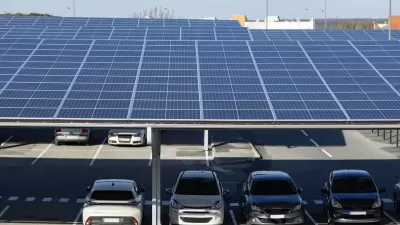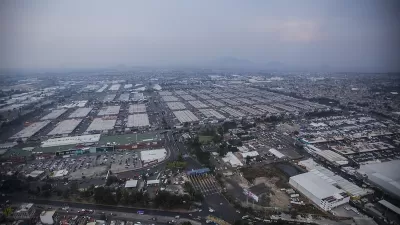Rooftop solar customers in California could face higher costs and reduced incentives if a proposed overhaul of the state's solar program is approved by the Public Utilities Commission.

If the California Public Utilities Commission approves an update to the state's solar incentive program, property owners could see a rise in costs for rooftop solar energy, among other changes, reports Sammy Roth. "Officials say the changes are needed to keep the lights on, prevent electricity rates from rising and encourage people to install batteries, while still growing the solar market. Solar executives say they would backfire and crater a thriving industry."
The changes, which would only apply to Edison, PG&E, and SDG&E customers, would "reduce payments to solar customers who send electricity to the power grid" through an overhaul of the process called net metering and add a monthly fee for homeowners that install solar, but also create a temporary "market transition credit" and fund programs to install clean energy in low-income communities and help homeowners buy batteries. Homes with existing solar panels would pay highly variable rates based on time of day.
Solar advocates and environmental groups are "slamming the proposed decision," calling it a huge setback for a badly needed and still nascent industry. But some also agree that the new model is more equitable and could help more low-income families invest in solar power.
Roth outlines the response from a variety of stakeholders including consumer advocates, the solar industry, utilities, home builders, and investors. While most agree on the need for more rooftop solar, they disagree on whether lowering existing incentives, even with transition assistance, will harm the rate of adoption of solar panels.
FULL STORY: Everything you need to know about California’s plan to slash solar incentives

Study: Maui’s Plan to Convert Vacation Rentals to Long-Term Housing Could Cause Nearly $1 Billion Economic Loss
The plan would reduce visitor accommodation by 25,% resulting in 1,900 jobs lost.

North Texas Transit Leaders Tout Benefits of TOD for Growing Region
At a summit focused on transit-oriented development, policymakers discussed how North Texas’ expanded light rail system can serve as a tool for economic growth.

Why Should We Subsidize Public Transportation?
Many public transit agencies face financial stress due to rising costs, declining fare revenue, and declining subsidies. Transit advocates must provide a strong business case for increasing public transit funding.

How Community Science Connects People, Parks, and Biodiversity
Community science engages people of all backgrounds in documenting local biodiversity, strengthening connections to nature, and contributing to global efforts like the City Nature Challenge to build a more inclusive and resilient future.

Alabama: Trump Terminates Settlements for Black Communities Harmed By Raw Sewage
Trump deemed the landmark civil rights agreement “illegal DEI and environmental justice policy.”

Dear Tesla Driver: “It’s not You, It’s Him.”
Amidst a booming bumper sticker industry, one writer offers solace to those asking, “Does this car make me look fascist?”
Urban Design for Planners 1: Software Tools
This six-course series explores essential urban design concepts using open source software and equips planners with the tools they need to participate fully in the urban design process.
Planning for Universal Design
Learn the tools for implementing Universal Design in planning regulations.
City of Santa Clarita
Ascent Environmental
Institute for Housing and Urban Development Studies (IHS)
City of Grandview
Harvard GSD Executive Education
Toledo-Lucas County Plan Commissions
Salt Lake City
NYU Wagner Graduate School of Public Service





























